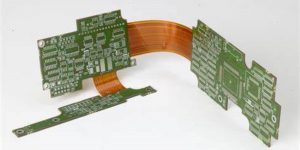Rigid Flex Circuits
Rigid flex circuits combine the advantages of rigid and flexible PCB technology to offer medical device manufacturers a powerful new way to design innovative electronic devices. The patented circuits reduce the size, weight and complexity of a product while still providing all of the essential functionality required in medical applications.
A leading medial industry company approached Epec with a rigid flex circuit board design that they wanted to be placed within a medical device used in conjunction with Magnetic Resonance Imaging (MRI). They provided the Gerber data for a full design review and quote. Epec’s engineers discovered that the current rigid flex circuits board would cause defects likely to impact the reliability of their end product and advised them that it should be changed.

As a result of the recommendation by the engineers at Epec, the client altered their rigid flex PCB design. This enabled them to meet the strict requirements of their end client, which was vitally important. They also saved on costs by reducing the number of systems in their final rigid flex circuit board.
Rigid Flex Circuits for Medical Devices
The rigid-flex circuit board assembly process begins with a one or two-sided lamination that contains the conductive patterns. The pattern is then etched either by dipping in an etch bath or spraying with an etchant solution. Holes for the pads, vias and connectors are then mechanically drilled. Copper is then deposited and chemically plated onto the pads and vias, as in a standard 2-sided PCB core. Once the copper is plated through, the top and bottom areas of the rigid-flex circuit board are covered with an appropriate coverlay material. This layer of coverlay can be made from additional polyimide film or adhesive, and in some cases, it can be a photoimageable solder mask that is applied by screen printing.
The resulting circuits are then cured by using UV light. The result is a rigid-flex circuit that has the same performance as a traditional 2-sided rigid PCB. Rigid flex circuits are ideal for applications with high density of devices. The combination of the rigid and flex circuits enables smaller and lighter components that can be positioned closer together, making them an ideal choice for medical devices that need to be small enough to fit into the patient’s body or on a hospital bed or table. This allows the devices to be more comfortable for patients to wear or carry and to perform their monitoring and treatment functions at a greater speed and efficiency than before.
Rigid flex circuits can also be designed to withstand harsh environmental conditions that may arise in some medical applications. This is especially important if the rigid-flex circuit boards are designed to come into contact with bodily fluids or undergo sterilization processes. By incorporating robust, dependable and abrasion resistant materials, medical-grade rigid-flex circuits can be designed to endure the conditions of use and improve their longevity.